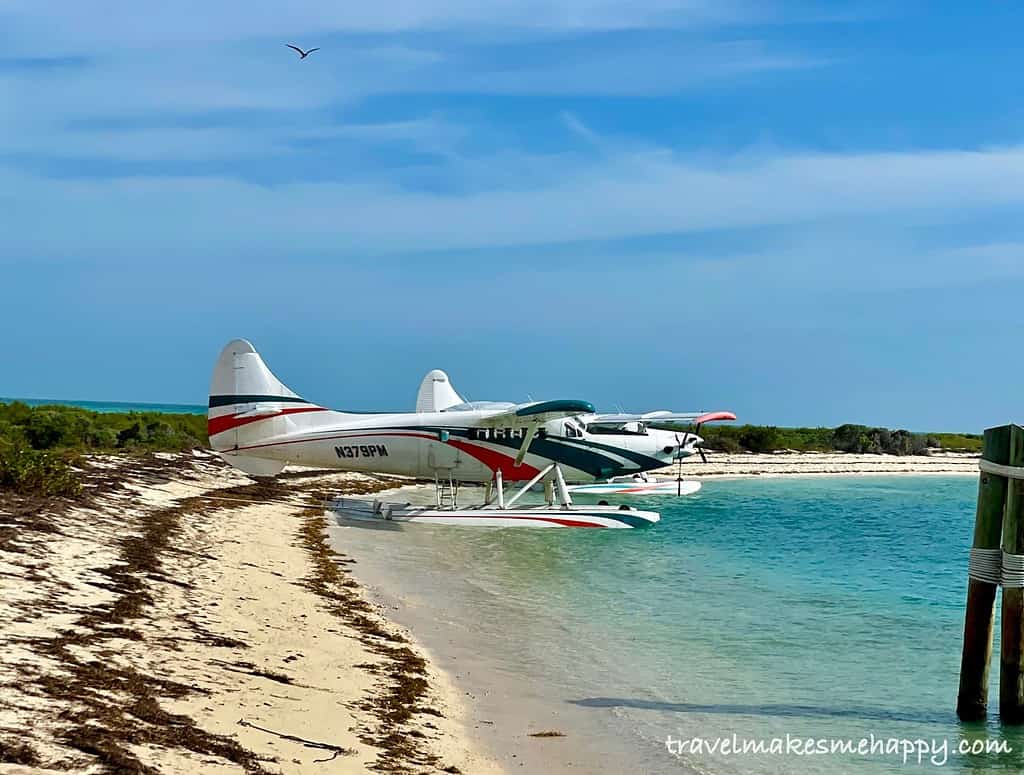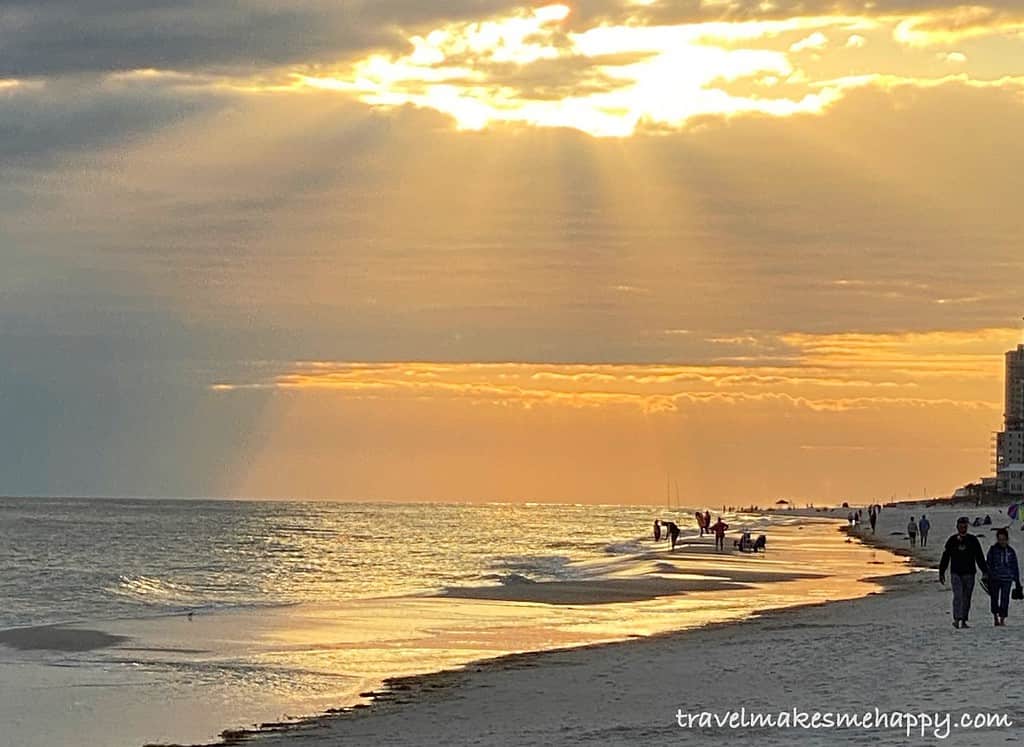Last updated: December 5, 2025
Planning the perfect trip itinerary doesn’t have to be overwhelming! Whether you’re organizing your first big vacation or looking to streamline your next getaway, having a solid travel itinerary makes everything smoother and way more fun. From choosing where to go and what to see, to mapping out your days and staying on budget, a little prep goes a long way.
In this ultimate guide to creating a travel itinerary, we’ll walk you through each step of planning a trip like a pro. You’ll learn how to research destinations, set goals, build a day-by-day schedule, and use smart tools to simplify the process. Whether you’re heading to Europe, the beach, a national park, or anywhere in between, this guide has everything you need to create a stress-free, customized vacation itinerary that works for you.
See our Review of How to Find the Best Travel Insurance and Why it’s Important too. We never travel without it.
Affiliate disclosure: We only recommend companies we trust. Also, as an Amazon Associate I earn from qualifying purchases. We cherish your support!

- 🌍 Why Creating a Travel Itinerary Is Totally Worth It
- Step 1: Choose Your Travel Destination and Do the Research
- Step 2 – Know Your Travel Style and Trip Goals
- Step 3 – Pick the Right Travel Time and Set a Budget
- Step 4 – Make a List of Must-See Attractions
- Step 5 – Plan Your Daily Itinerary
- Step 6 – Book Flights and Hotels Smartly
- Step 7 – Confirm Plans and Prepare for Surprises with a Backup
- 📌Download a Free PDF Itinerary Checklist:
- Final Thoughts on Creating the Perfect Travel Itinerary
- More Travel Planning Resources and Guides
🌍 Why Creating a Travel Itinerary Is Totally Worth It
Sure, winging it can be fun—but a good travel itinerary gives your trip structure without killing the vibe. Think of it as your personal roadmap to adventure: it keeps you on track, helps you make the most of your time, and saves you from wasting hours figuring out what to do next once you arrive.
Having an itinerary means fewer missed opportunities (like that museum that closes early or the restaurant you forgot to book) and more room for unforgettable moments. It also gives you a better idea of how to pace your days so you don’t burn out trying to cram too much in or accidentally skip something you really wanted to see.
Plus, when you’re traveling with others, a shared plan helps keep everyone on the same page (and cuts down on those “what do you want to do?” convos that go in circles). A flexible travel itinerary keeps the fun spontaneous but with a backup plan in your pocket. Win-win!
[Make sure you also check out our guide on how to save money on summer travel this year and our Summer Travel Deals guide]
Step 1: Choose Your Travel Destination and Do the Research
First things first, figure out where you want to go. Once you’ve got a place in mind, it’s time to start a deep dive into research mode. For me, this is the fun part! Start with reading reviews on websites like TripAdvisor, Yelp, Rome 2 Rio, and Lonely Planet. They are your new best friends – these are gold mines packed with valuable information from travelers who’ve been there and done that. Of course, take into account that some reviewers use the platform to complain, but there is a lot of invaluable information to help you plan your trip itinerary in there too!
You can also research your chosen destination’s state tourism website and the National Park Service website for even more resources.
Soak up everything – the good, the bad, and the downright hilarious – from these reviews.
Getting a lay of the land through other travelers’ experiences can help you shape your dream trip. Reading travel reviews can also help you find the best hotels, restaurants, and inside information about the places you want to visit.
Also, don’t shy away from travel blogs (like our humble blog!), vlogs, and social media sites like Instagram for a closer, more personal peek into your chosen destination.
This way, you’ll get to understand what the destination has to offer, and you can start jotting down things you don’t want to miss. Just remember, the goal is to gather as much information as possible to make your trip an unforgettable one! It’s also great to learn from others what to avoid, insider information on transportation options, off the beaten track places to see, and other amazing tidbits.
🔹Some of our favorite experiences would have been missed if I didn’t read reviews and learn from other travelers’ experiences!
📚We also love reading Lonely Planet books and travel guides to research our trip! Amazon has a guide for just about any destination too!

Step 2 – Know Your Travel Style and Trip Goals
When you are diving into research, take a moment to reflect on your travel goals and preferences.
Questions to Ask Before You Start Itinerary planning:
Are you seeking relaxation, adventure, or a mix of both? Are you interested in cultural experiences, natural wonders, or historical sites? All of these factors can help you in choosing where you want to go on vacation.
Knowing what you and your travel companions want to get out of the trip will help you narrow down your options and focus your destination research. Make sure to include those traveling with you in the process even if it is you planning all of the details so everyone feels connected to the planning. [I usually try to do a day by day calendar [see the daily trip itinerary section] to send to those traveling with me so they see what we have planned for each day and list the hotel that we’ll be staying in and anything else that they should know for each day.]
If you would rather expert guidance on a more comprehensive customized vacation itinerary there are reputable companies like our friends at Asia King Travel that can plan the whole itinerary for your trip.
✈️We use Skyscanner to set a weekly price check to find the best dates/flights for a trip destination!
Step 3 – Pick the Right Travel Time and Set a Budget
Establishing your travel dates and budget will significantly impact your itinerary. Consider factors such as weather, peak tourist seasons, and local events when deciding on your dates. This is where all of the research comes in handy. It is great to know what is going on in a location so that you can avoid higher hotel rates by choosing a different week if something major is happening that drives the rates up.
Sometimes I check airfare first to see when the cheapest flights are then plan everything else around those dates. Websites like Skyscanner can help monitor flights for the cheapest dates and routes.
Additionally, having a clear budget will help you allocate resources for accommodations, transportation, meals, and activities.
You can use our simple travel budget calculator to help you get a quick total on what you will need for your trip.

Step 4 – Make a List of Must-See Attractions
Based on your research, compile a list of must-see attractions and activities that align with your interests and priorities. Consider factors such as entrance fees, opening hours, and proximity to other sites when making your selections.
Checking the activity options available for the city you are visiting with the Get Your Guide website is a great way to see what is available. They also offer options to book activities and pay later when it is closer to your travel dates.
Step 5 – Plan Your Daily Itinerary
With your list of attractions and activities in hand, start organizing your daily itinerary. I use a week calendar template for Word or there are many travel planning applications to help you keep track of the day to day plans.
Keep the following tips in mind:
- a. Group attractions and activities by their location or meeting points to minimize transit time and maximize exploration.
- b. Factor in rest and meal breaks to avoid burnout and traveler meltdowns. We usually try to plan down time by day 3 to recharge.
- c. Leave room for spontaneity and flexibility. It’s essential to strike a balance between having a well-structured plan and the freedom to discover unexpected experiences. I usually have an idea of what we’ll do and put “maybe …..” on the daily calendar to remind me when we are there. It is not set in stone and sometimes I include a few options too.
- d. Include alternative options in case of bad weather or unforeseen closures. Having a back up plan is always an important travel tip for any itinerary!

Step 6 – Book Flights and Hotels Smartly
Now that you have a rough itinerary in mind, book accommodations and transportation for your trip. Research various options and compare prices to ensure you find the best deals. Consider proximity to attractions, amenities, and transportation hubs when choosing your hotels or other lodging.
Trip planning factors to help you get the best deal
When planning your travel itinerary, the ideal time to book a hotel or flight depends on various factors such as destination, season, and demand. However, a general guideline for getting the best deals and availability is:
- Flights: It is recommended to book flights between 2 to 6 months in advance for domestic travel, and 3 to 8 months in advance for international travel. Airfares tend to be the most affordable around 70 days prior to departure, but this may vary depending on the route and season (especially now). Set a flight checker on Skyscanner and they will check for the best time and flight prices.
- Hotels: Booking accommodations 1 to 4 months before your trip is usually a safe bet, though this can also depend on the destination and time of year. For popular tourist destinations during peak season, book even earlier to ensure availability and secure the best rates. We book as far as a year out for important trips like going to Europe or at times such as holidays like Mardi Gras, New Years Eve, etc. We find that the prices only go up so we try to book as soon as I have a definite plan.
- Also, make sure there is a good cancellation policy in case things change with your itinerary. Sometimes booking direct is cheaper – Check IHG Hotels, Hilton Hotels, Best Western (BW also has great budget options)
- Tip: Aggregate sites like Skyscanner, Trip.com, Tripadvisor, or Booking.com can help you book everything (flights, hotels, car) together and save money.
Remember, these are general guidelines, and the optimal time to book can vary (especially holidays). It’s essential to research your specific destination and consider factors such as local events, peak travel seasons, and airline or hotel promotions to determine the best booking window for your itinerary.
Also, keep checking back to make sure flights or hotel rates haven’t gone down. We have used this method to get travel credit through Southwest when a flight has gone down. You just call and they will credit the difference in your travel account.

Step 7 – Confirm Plans and Prepare for Surprises with a Backup
Before you set off on your adventure, confirm the details of your itinerary, including opening hours, entrance fees, and any necessary reservations.
Additionally, have a backup plan in case things don’t go as expected, such as alternative activities or emergency contacts.
It is also really important to make sure all plans have flexible cancellation policies because things can change and you don’t want to be charged if you need to move things around or change activities.
Side Note: This may sound morbid, but we always leave an “if we die” folder on our desk that includes all life insurance info and things our family would need in case the unimaginable happens. It freaked my family out the first time, but they are used to it now. We also include our travel itinerary and best travel insuranceinformation [we recommend Travelex ] so that they have everything they need just in case.

📌Download a Free PDF Itinerary Checklist:
Don’t worry, no email signup required!
📥 Download Your Free Travel Itinerary ChecklistFinal Thoughts on Creating the Perfect Travel Itinerary
Creating a well-thought-out travel itinerary is one of the best ways to take the stress out of vacation planning. By doing a little research, setting goals, and organizing your daily activities, you can make the most of every moment and avoid common travel mishaps along the way.
Whether you’re planning a weekend escape or a bucket list adventure, this guide to building the perfect travel itinerary gives you the tools to travel smarter, stay organized, and enjoy the journey. Use what works for you, skip what doesn’t, and remember: the best vacations strike a balance between structure and spontaneity.
Here’s to unforgettable experiences, well-planned adventures, and peace of mind while you travel!✨
Author’s Note:
Hi, I’m K.J.! Here at Travel Makes Me Happy, we’ve spent years crafting travel itineraries for everything from weekend getaways to international adventures. We created this guide based on personal experience and tons of real-world trial and error. You’ll find honest advice, useful tools, and tips that have helped us plan unforgettable trips for couples, families, and solo adventures alike. I hope this guide helps you create your dream vacation too! 🌍✈️

